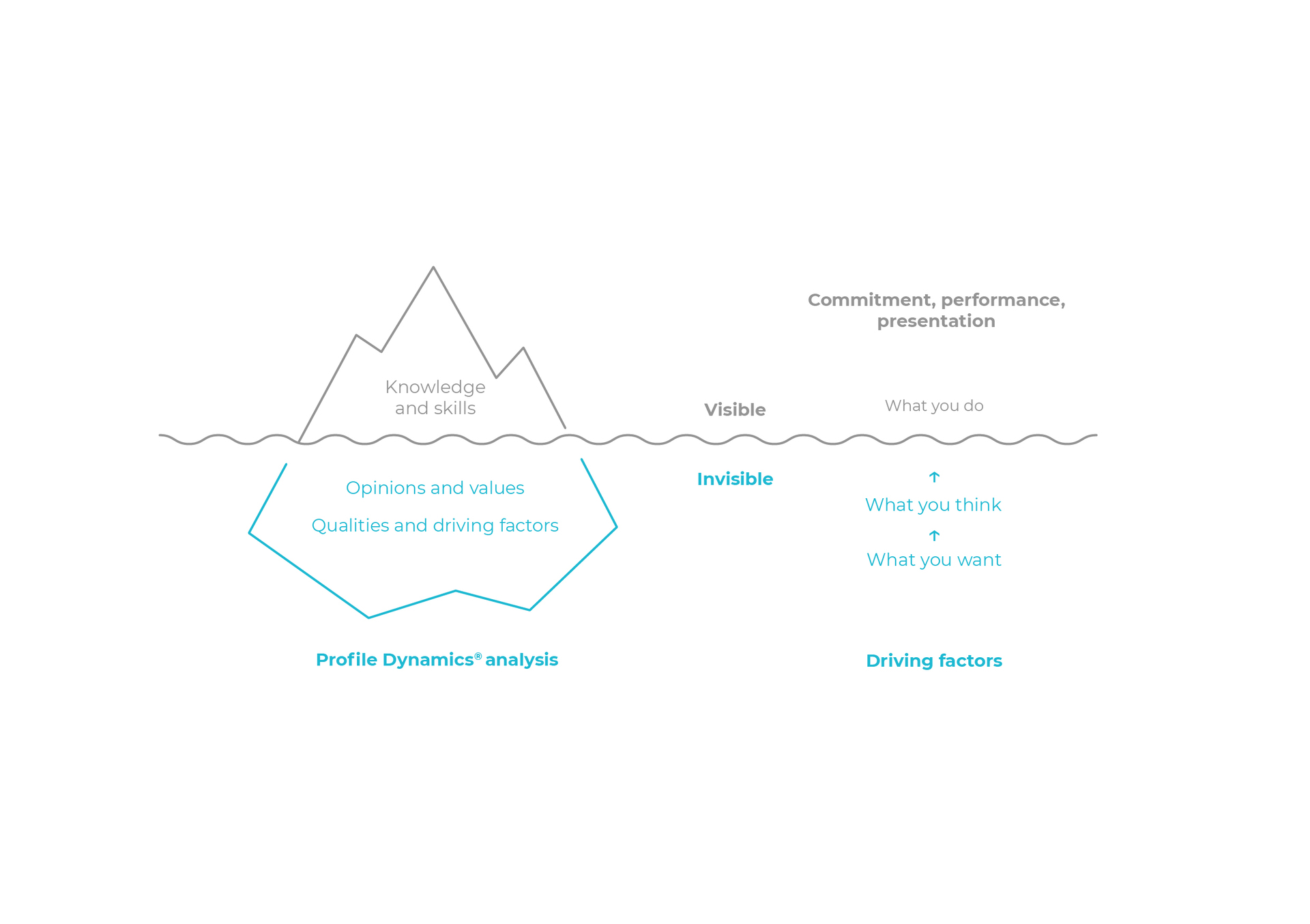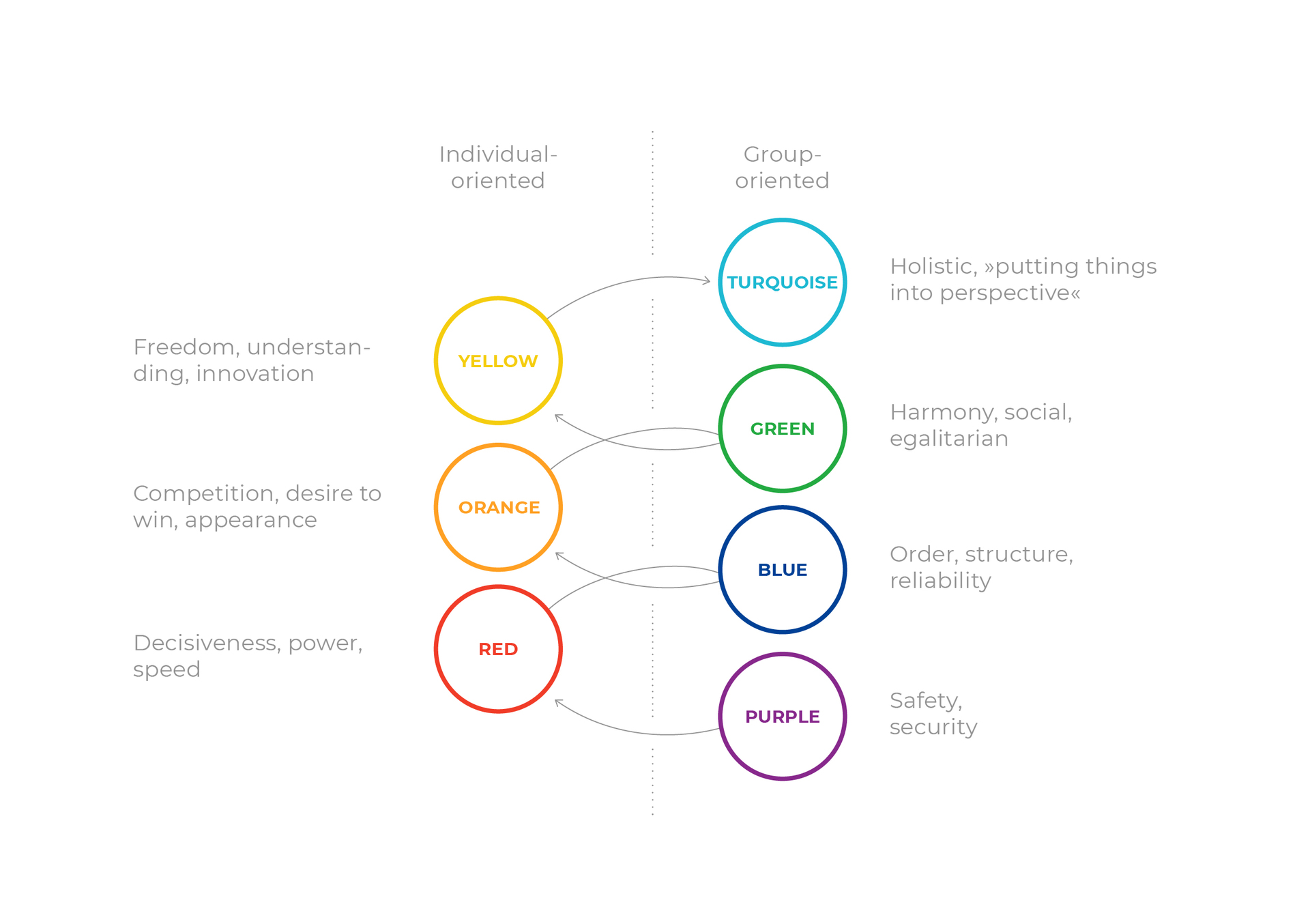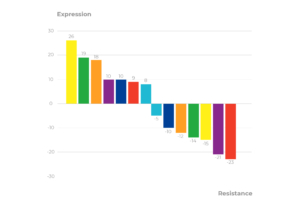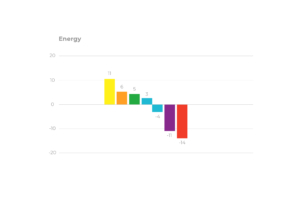- Home
- /
- What we do for you
- /
- Scientific basis
Why do people do what they do? What drives them? If we can answer these questions we may have a key to motivating people, to providing them with more job satisfaction, to improve their working environment and to increase the significance of their role in an organization.
McClelland’s iceberg model shows how invisible driving factors make up our norms and values and how they are expressed visibly in our behavior. Analyzing these driving factors provides a chance to tailor the way we motivate people and to improve their dedication and performance.
Key to success
Profile Dynamics® offers an insight into people’s underlying personal value systems which largely determine their thoughts and behavior. It also gives a chance to put these into practice. It provides a key to successfully bring organizations and their personnel closer together, to improve the atmosphere in the workplace and to bring the organization to a higher plane.

Do you want to know more?
Call or e-mail us.
Antilopestraat 20
1338 EE Almere
T: +3136 – 54 65 243
E: office@profiledynamics.nl
Types
The affinity people have towards one or other of these systems varies from person to person and can be measured with a specially developed analysis.
The seven driving factors and the values and behavior associated with them have each been assigned a color. Overall, the value systems which drive people tend not to change over time. However, this may happen if there are changes in environment and with life experiences.
Analysis
The Profile Dynamics® analysis consists of a simple list of questions. It is accessible on the Internet and takes approximately 20-30 minutes to complete. The program analyzes your answers and computes your personal profile graphically.




